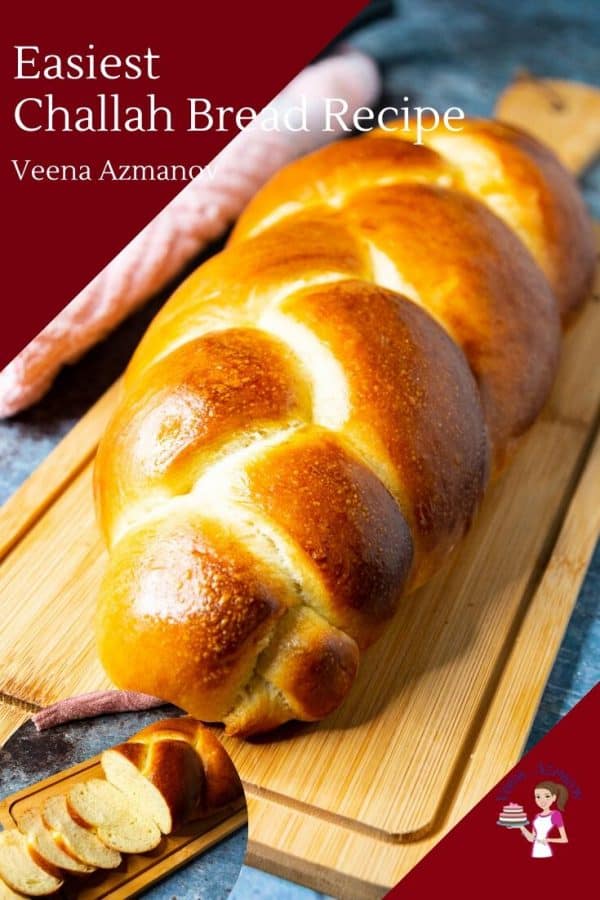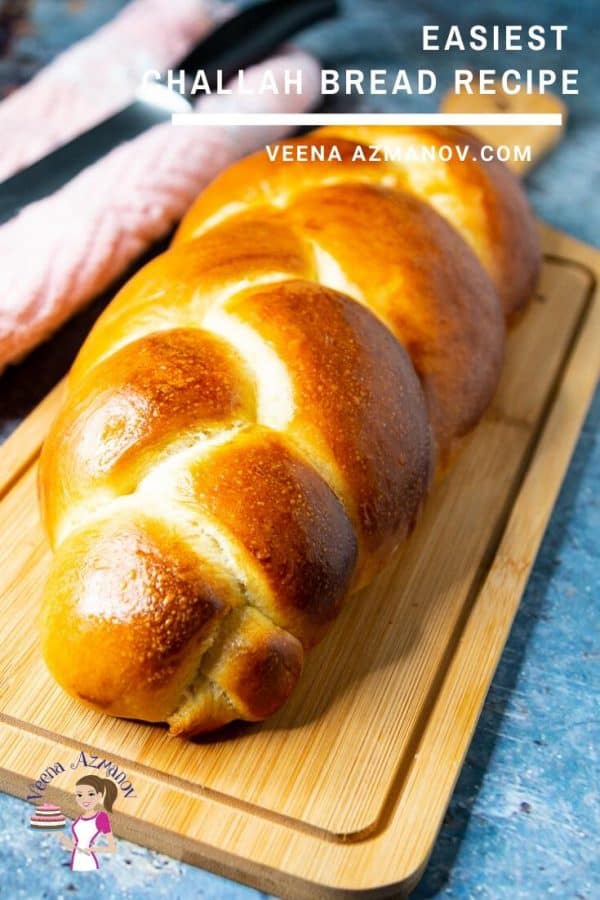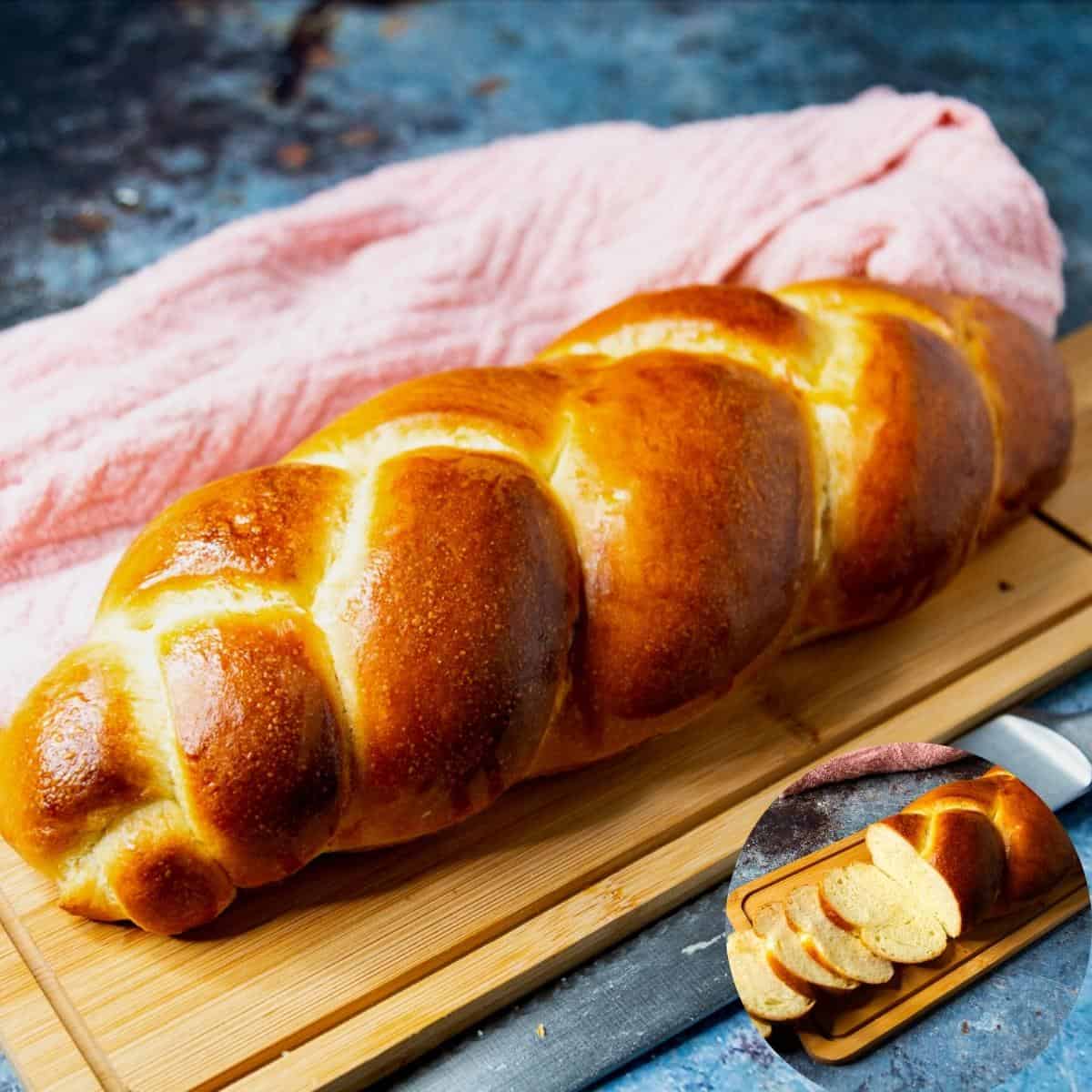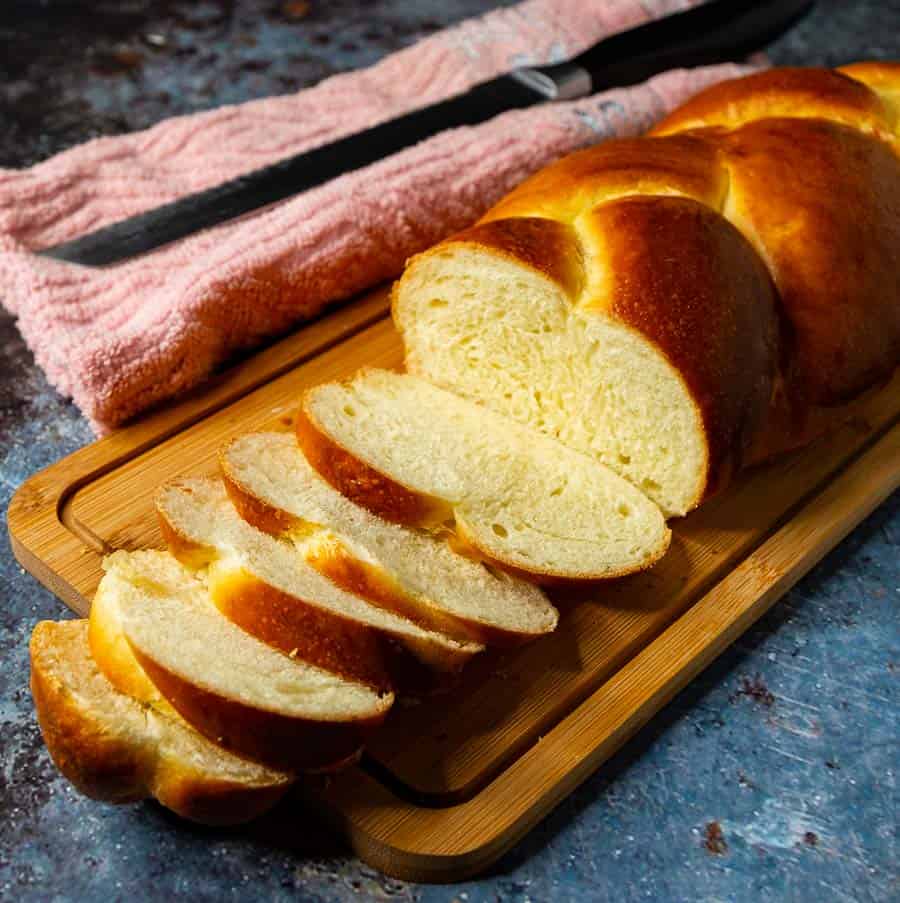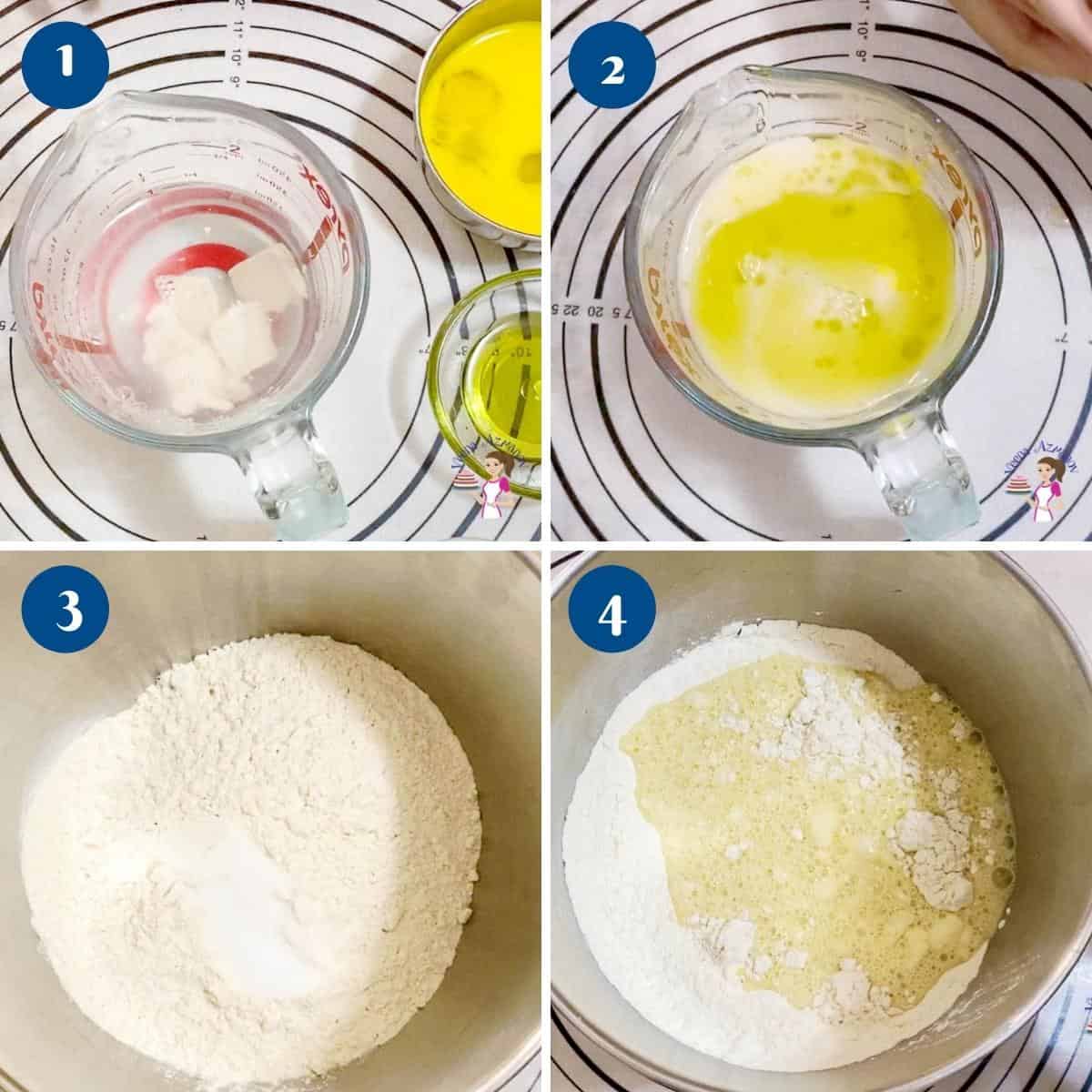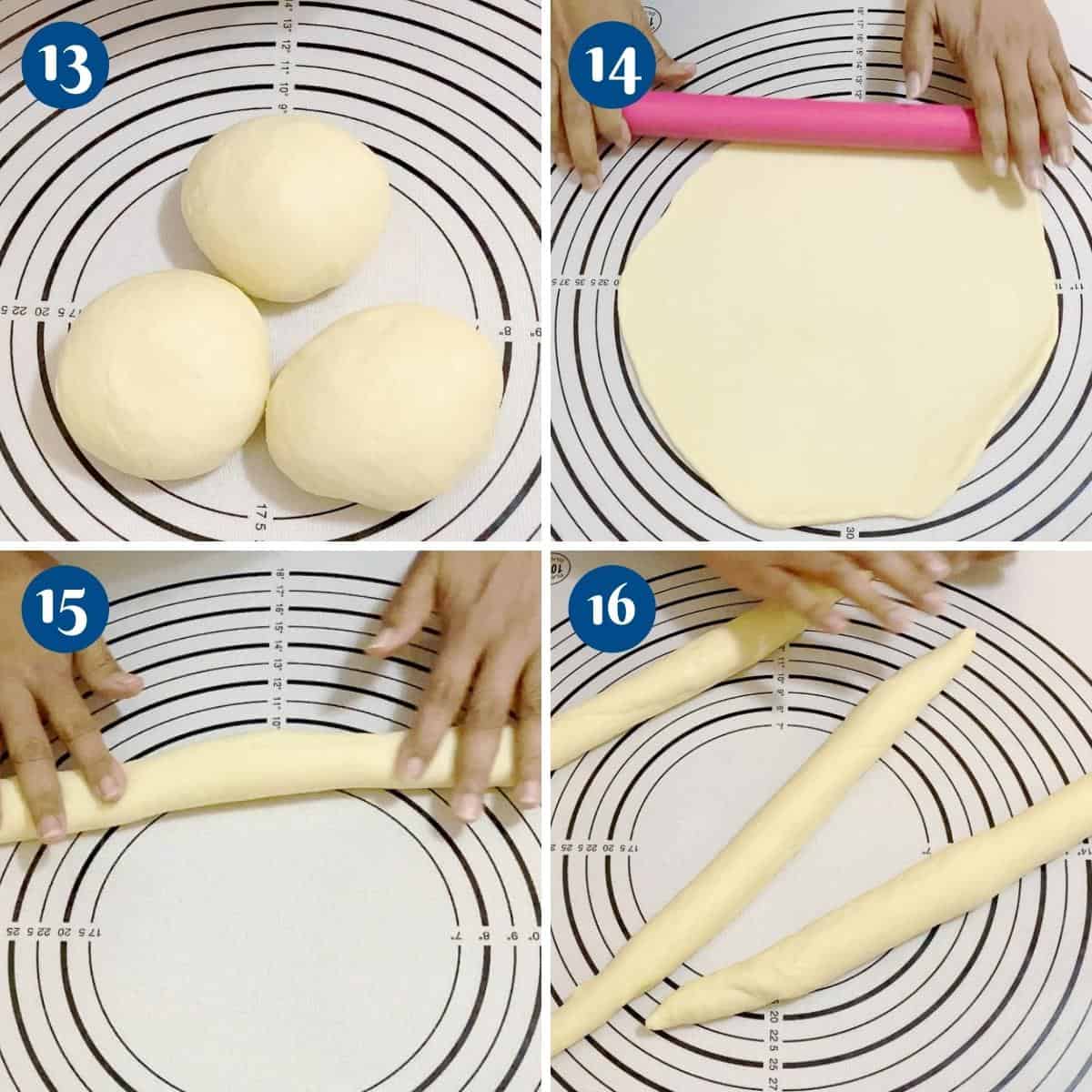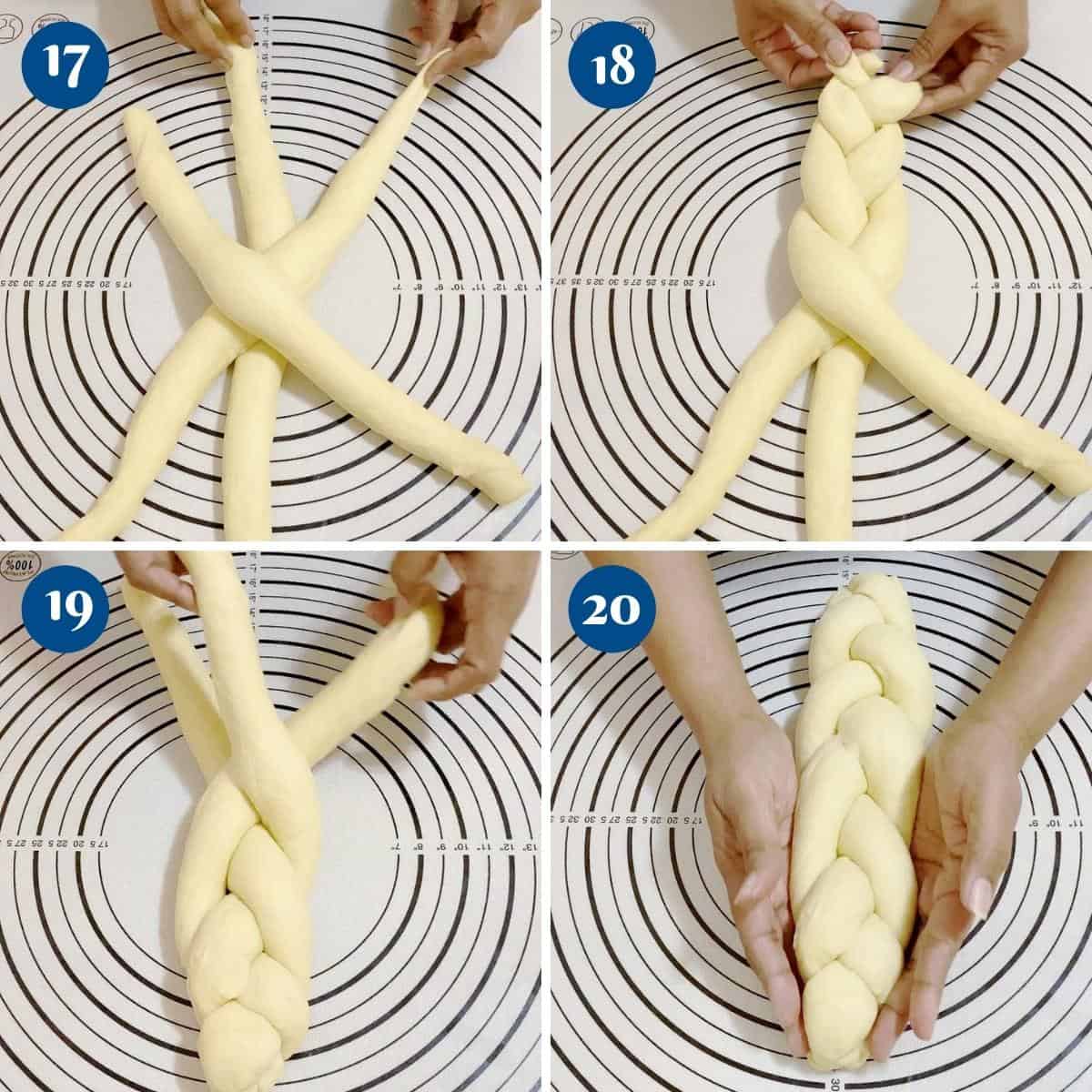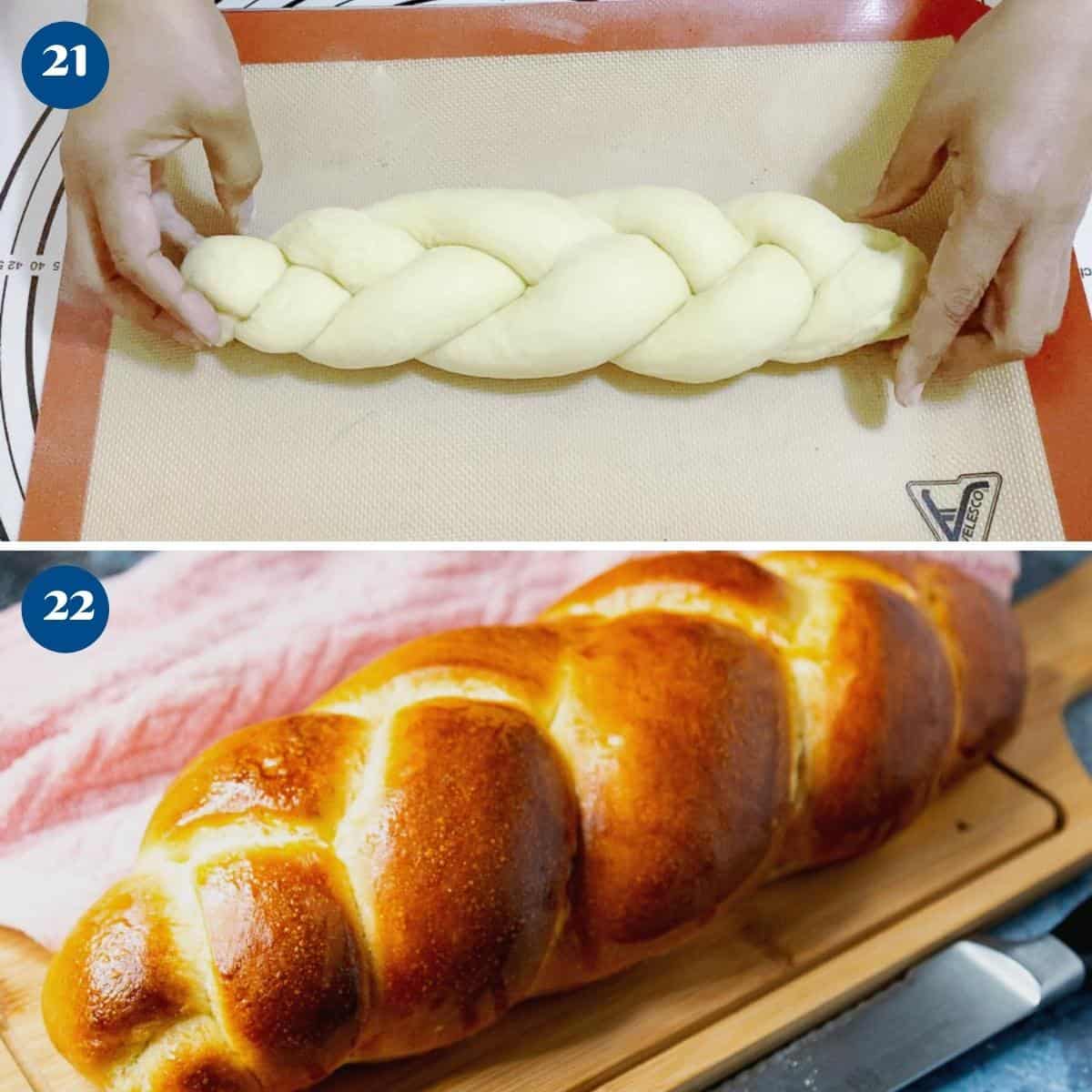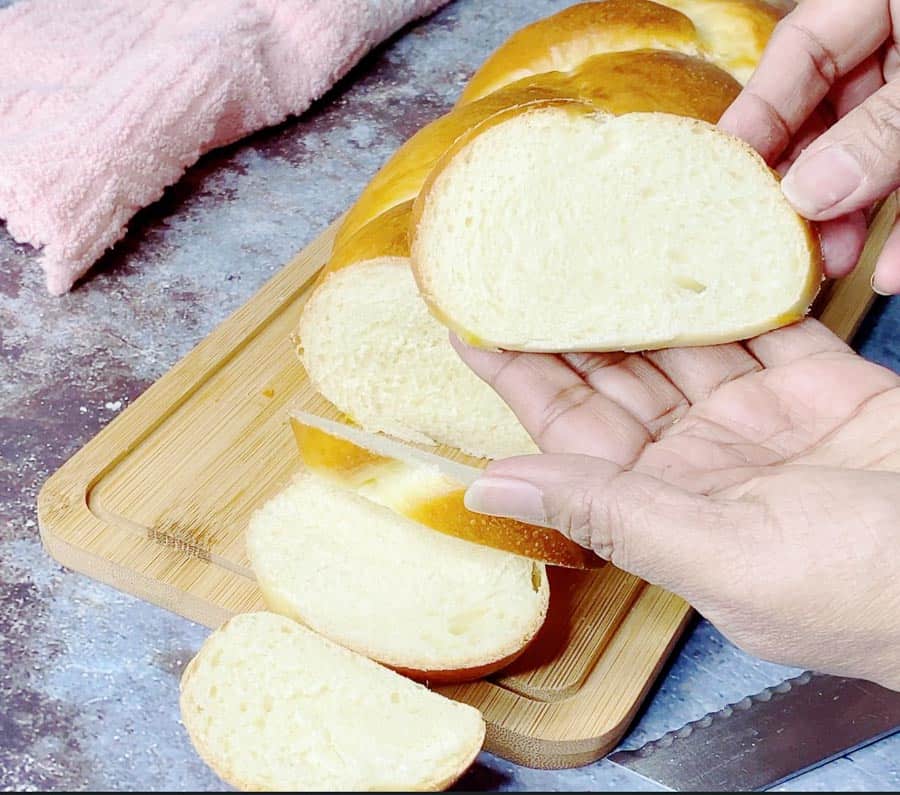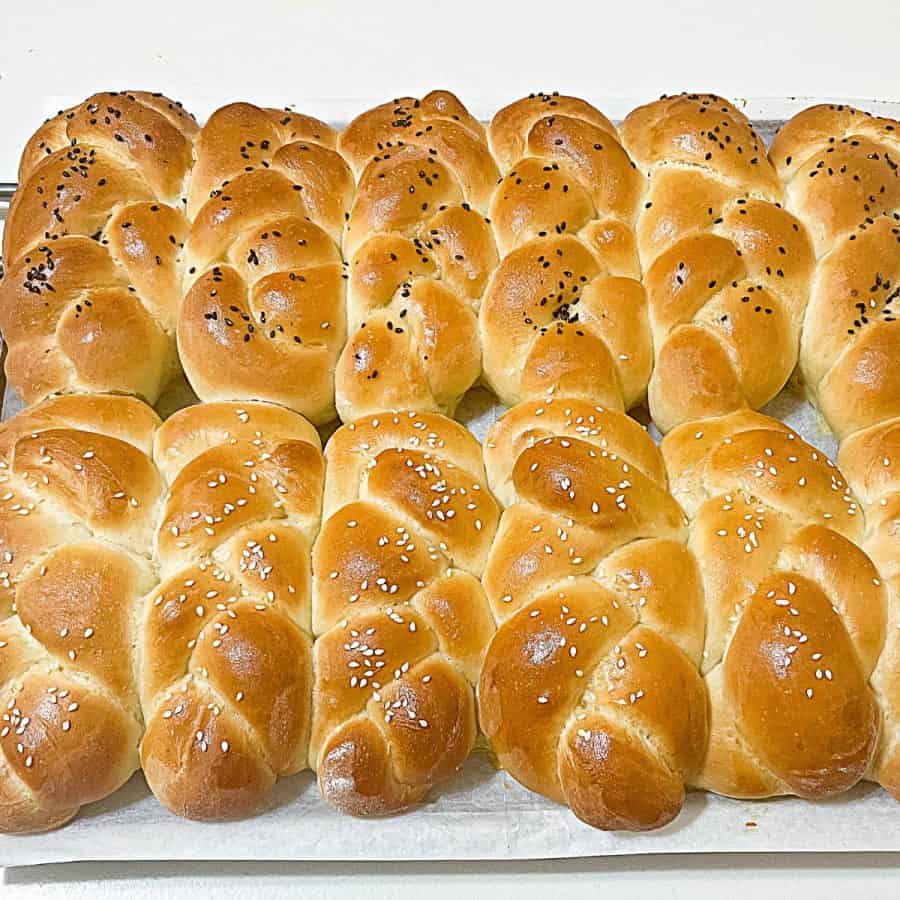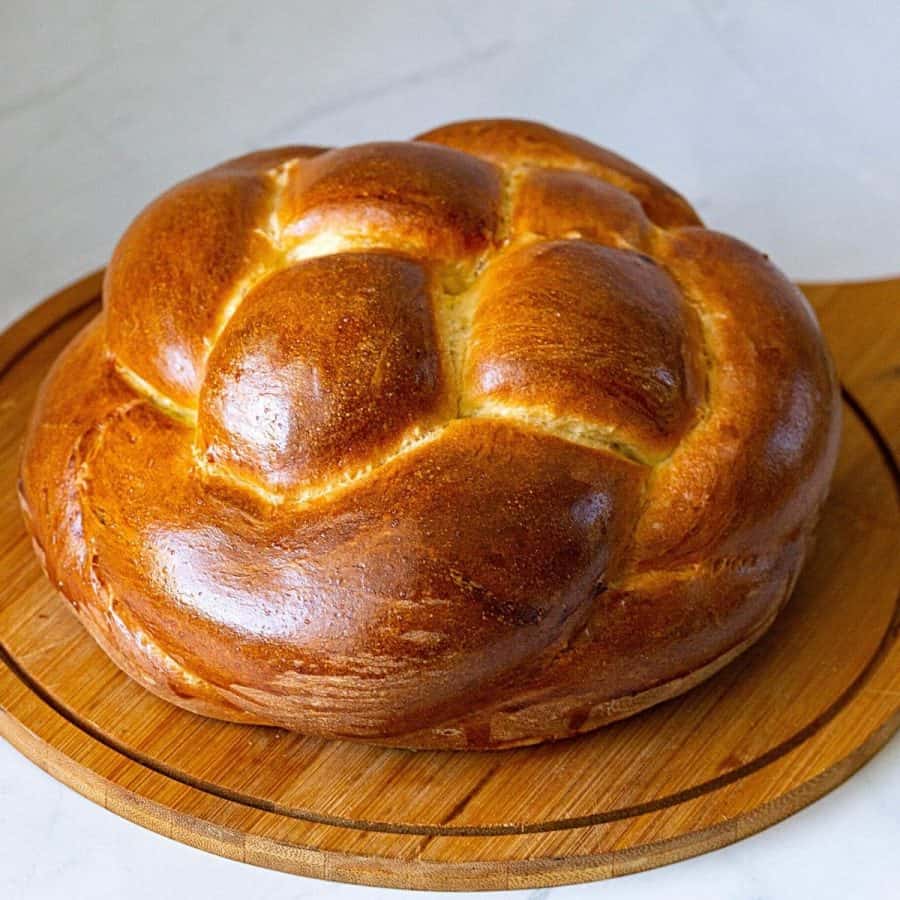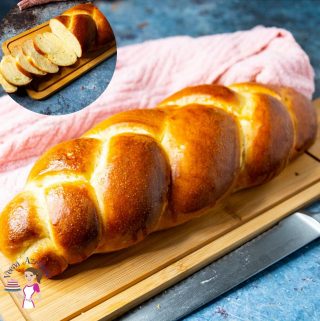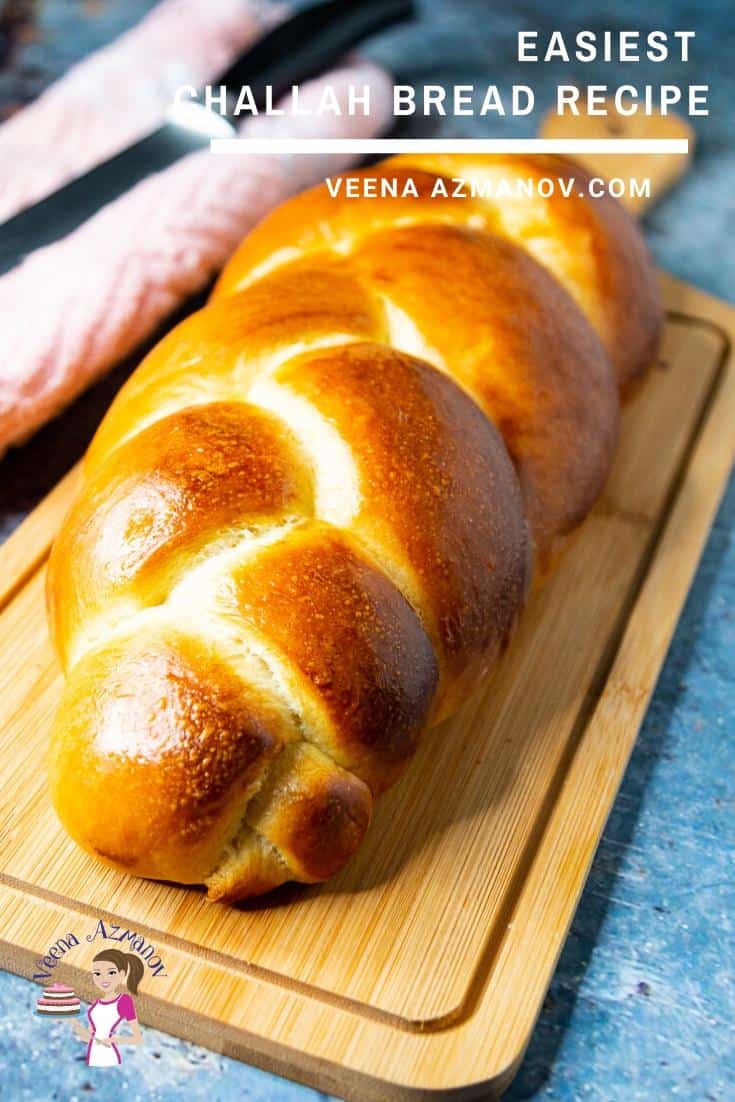If you love bread, today I have a wonderful bread recipe to enhance your baking skills. While this one looks intimidating, it is surprisingly simple and easy to make. The challah bread is one that always makes an impressive centerpiece to any dinner table. Try different braids with the same dough to show off your baking skills. This bread is a Jewish staple and a must-have for every Friday dinner and Jewish holidays.
Step-by-step: Easy Challah – 3 Braid Bread
Yeast mixture – In a mixing bowl or measuring cup combine warm water (110 F), yeast, honey, oil, and eggs. Stir and set aside to foam for 3 mins. Dry mixture – Measure the flour and salt in a mixing bowl or stand mixer with the dough hook.
Knead – Add the yeast mixture to the flour mixture and combine well on medium-low speed. Knead until smooth and elastic. This should take about 6 to 8 minutes on medium-low in the stand mixer or about 10 to 15 minutes by hand on a lightly dusted work surface. Bowl – When the dough is smooth, soft, and elastic. Shape it into a ball. Place the dough in an oiled bowl seam side down. Coat the surface with oil to prevent drying. Cover with a clean kitchen cloth or plastic wrap. Rise – Leave in a warm place. Let rise for 60 to 90 minutes until doubles in volume.
Divide – Transfer to a well-dusted work surface. Press down and shape it into a log. You can divide the dough into two small loaves. Then, divide the dough into 3 portions. Ropes – Shape each into a ball. If necessary, let rest for 5 to 10 minutes. Roll each ball with a rolling pin on an un-floured work surface. Then, roll like a jelly roll into a rope about 18 inches long (see video)
3 braid challah – Place all three long strands so they intersect in the middle. Then braid from the center to the bottom. Flip the dough and braid from the center to the bottom on the other side too. Proof – Place the loaves on a baking sheet lined with parchment paper. Cover with a plastic wrap or clean kitchen cloth and let proof for 45 to 60 minutes.
Oven – About 20 minutes before baking preheat the oven at 350°F /177°C / Gas Mark 4 Bake – Brush the bread with a beaten egg. Then bake each loaf on the center rack of the oven for 35 to 40 minutes. Cool – Remove from the oven and let cool on a wire rack for 5 minutes. Then, cover with a clean kitchen cloth to keep it soft.
Troubleshooting
Dough Doesn’t Rise: The yeast may be expired or not activated properly. The water used might be too hot or too cold. Ensure the yeast is fresh and properly activated in warm water (110°F/45°C). If the environment is cold, allow the dough to rise in a warmer place, such as an oven with the light on or near a warm appliance. Challah is Dense: Insufficient kneading, over-proofing, or using too much flour. Knead the dough until it is smooth and elastic. Avoid adding excessive flour while kneading. Ensure the dough rises just until doubled, and not longer. Challah Spreads Too Much: The dough might be too wet or over-proofed. Make sure the dough is slightly tacky but not sticky. During the second rise, keep an eye on the dough to prevent over-proofing. Use a baking sheet with parchment paper to help the challah keep its shape. Challah Burns on Top but is Underbaked Inside: Oven temperature may be too high or the challah is positioned too high in the oven. Bake at the recommended temperature (350°F/175°C). If the top browns too quickly, tent it with aluminum foil during the last 10-15 minutes of baking. Place the challah in the center of the oven for even baking. Challah is Dry: Overbaking or using too much flour. Bake until the challah is just golden brown and sounds hollow when tapped. Avoid adding too much flour during the kneading process. Uneven Braiding: Inconsistent dough ropes or incorrect braiding technique. Ensure each dough rope is the same length and thickness. Follow the braiding instructions carefully, starting with the outermost ropes and bringing them to the center consistently. Crust is Too Hard: Overbaking or not enough moisture in the dough. Bake for the recommended time and check for doneness. Adding a bit more water to the dough or using a steam tray in the oven can help achieve a softer crust.
Frequently asked questions
Did you LIKE this recipe? Save it for later. You can find my recipes on Pinterest. Follow me on Facebook, Twitter, and Instagram.Subscribe, and I’ll send you new recipes right to your inbox. It is a Jewish bread made every week on Friday to celebrate Shabbat, the Jewish weekend, as well as on Jewish holidays, except Passover. It’s an enriched dough made with flour, oil, and eggs and gets a slight yellow color from the eggs. Traditional challah is made with water because Jews do not eat dairy and meat together. But if you’re not keeping kosher, try milk to make this bread, it is quite delicious. Thank you for sharing - Save for later
